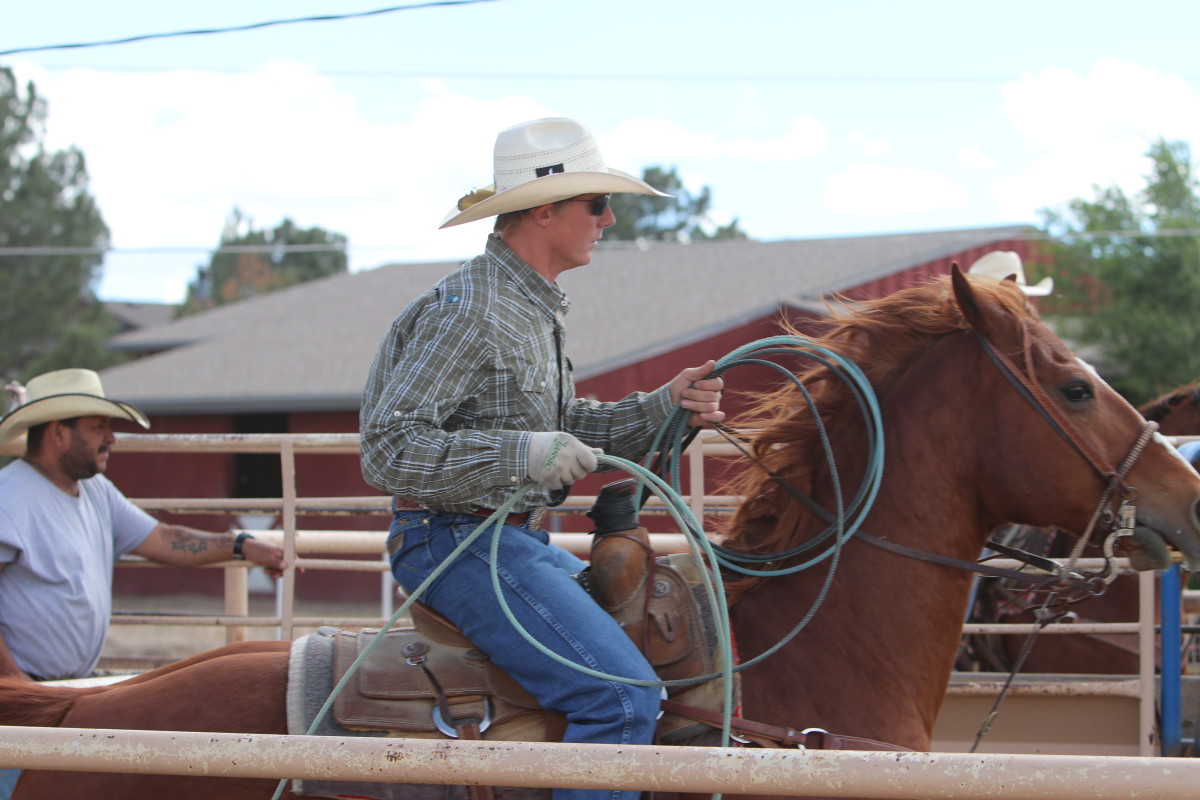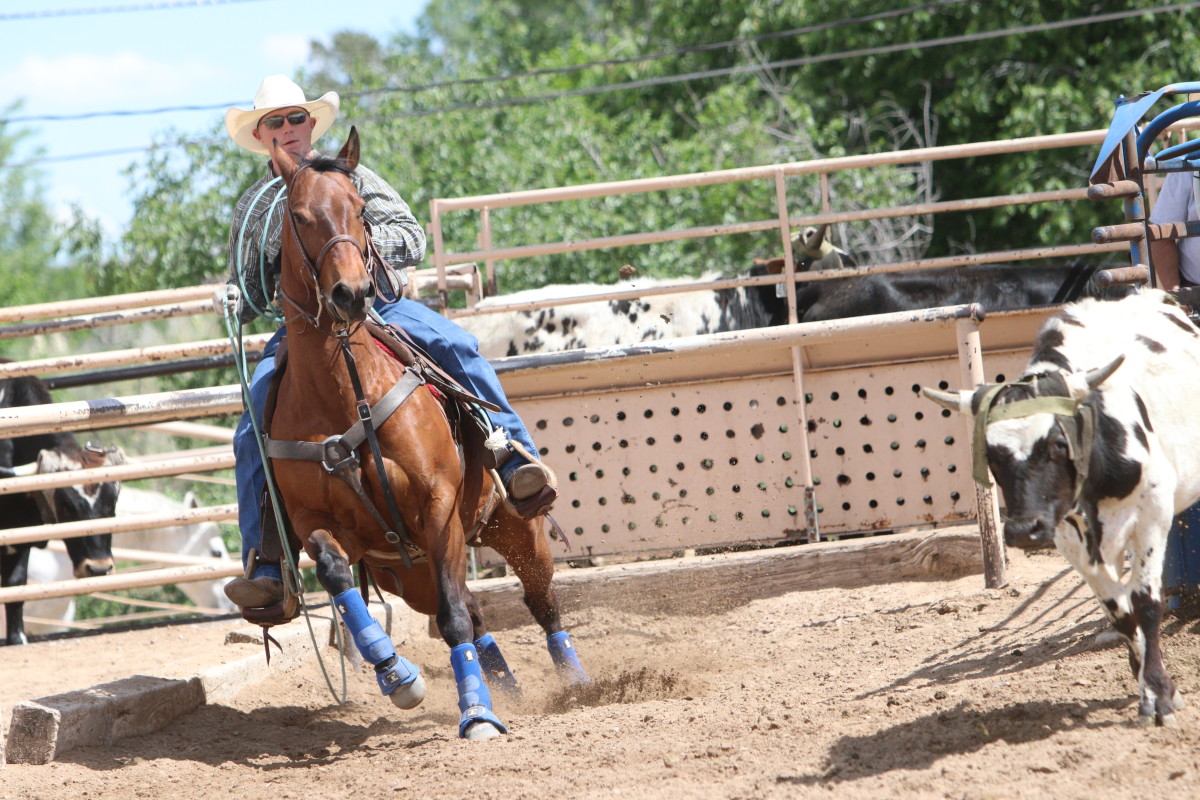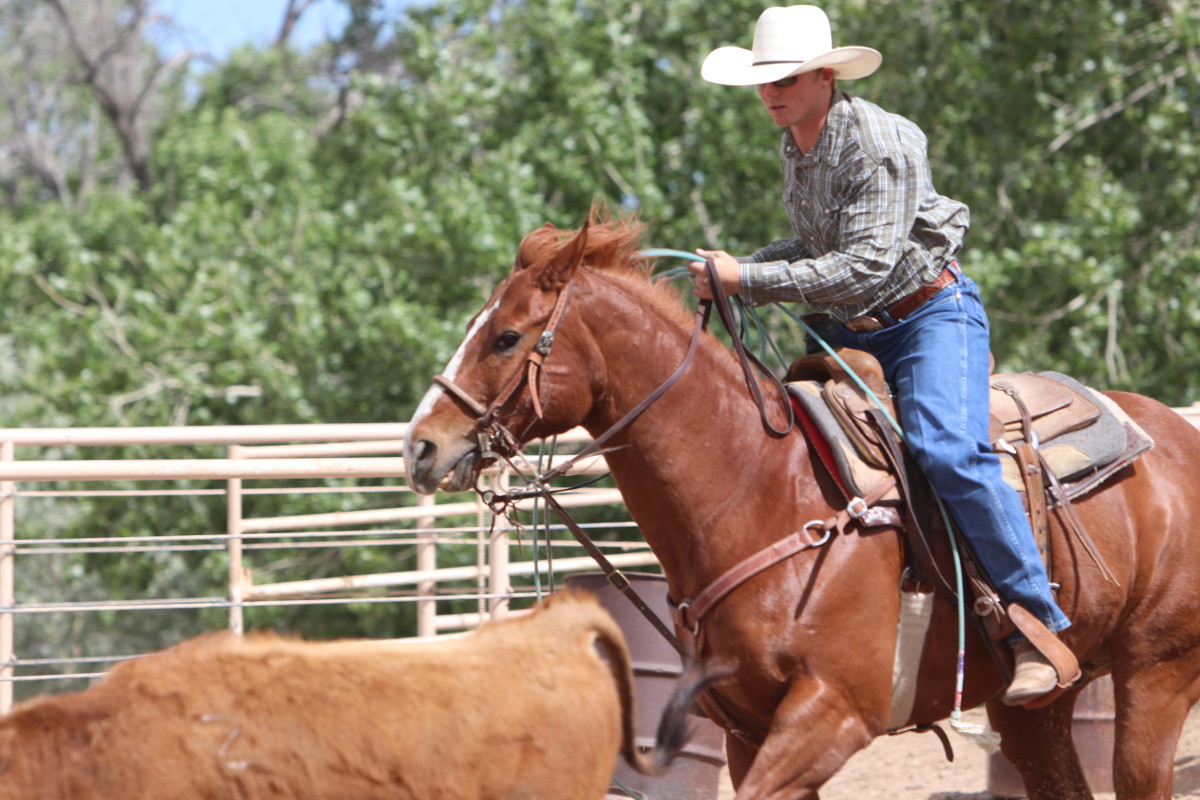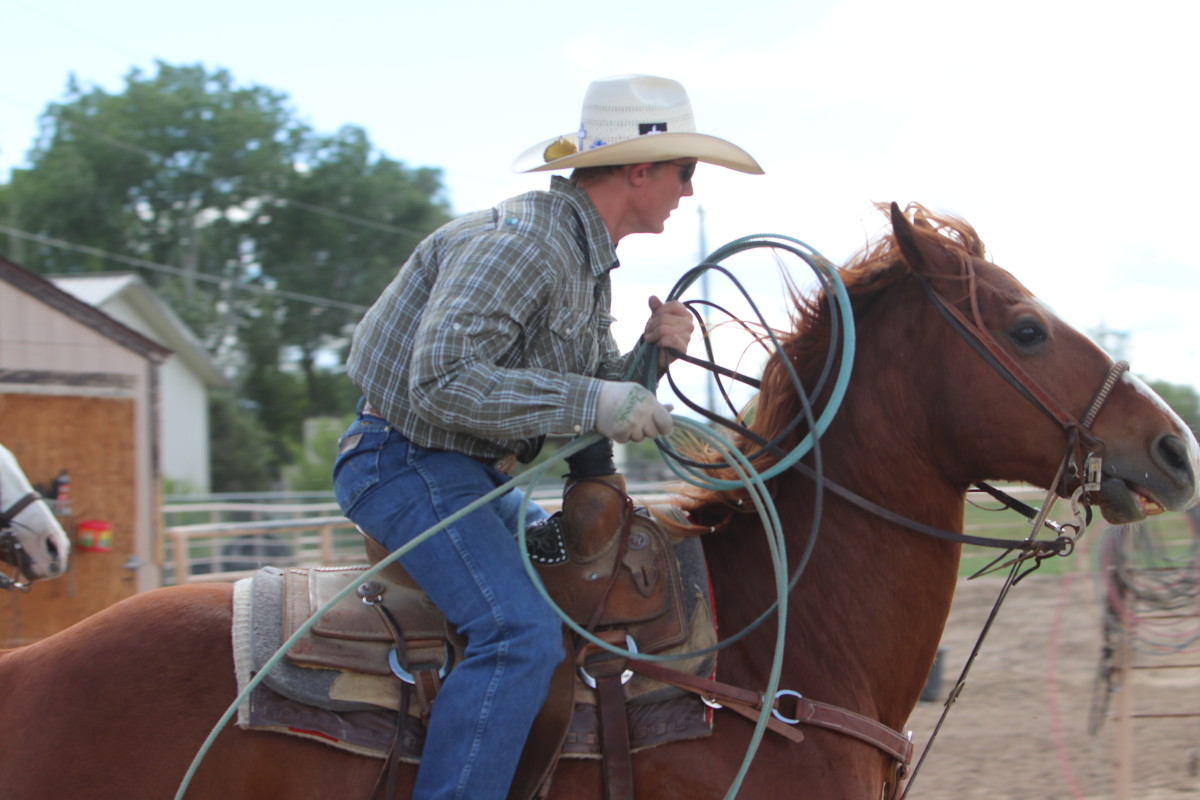The start of a run, whether you’re heading or heeling, can make or break you. On the heel side, how you leave the box sets up the direction of the steer for your header and the flow of the run. From jackpot scenarios to horse shows to rodeos.
READ: Finding Power in Team Roping Heeling Position with Trey Yates

Standing in the corner, especially on my bay horse Dude (Romancing The Chics), I’m not as concerned about my horse standing perfectly still, looking straight at the steer. Dude tends to want to squat, so I don’t sit him all the way in the corner. I squeeze him with my legs if I feel him start to squat, and I let him turn his head to the left. It’s a comfort thing for him, and I know that he’s going to go when that steer leaves no matter what. I try to stay as calm and relaxed through my body as I can, because I know he can feel everything I’m doing.

READ: Dustin Bird and Trey Yates End Team Roping Partnership with Win at The 2019 Cheyenne Frontier Days
It seems like when I watch videos of myself, I catch myself watching my header nod. I don’t just drop the hammer—I kind of leave my hand down a little bit but still pick up. When I get halfway to the plane of the box, I’m rolling. I try to get my toes down and my feet behind me, locked in the swells of my saddle. That gives me power on my rope, so when the steer turns, I’m ready.
READ: Trey Yates: Resistol Rookie Season Set Up 2018 Success

On my horse’s first step out of the box, I want to break down the wall. Some people have it in their minds that they need the steer going left fast. But a lot of great runs are straight or even a step to the right. My horses are decently fast, so even if I break down the wall, if the steer heads left, my horses can always be in the left lead. Whichever direction the steer goes, they usually don’t have to swap leads, so there are no unnatural movements.

LISTEN: The Score Season 1, Episode 9 with Trey and J.D. Yates
I want my horse’s shoulders, rib cage and hips in line and straight going down the wall. I will let him turn his nose in a little bit, but I want his body square between my legs. If my horse is wrapped around my leg, with his body curled, when the cow turns, he will have to get straightened back out to take the jerk. But, if his head is up, body is straight and butt is down, he’ll be ready to take the jerk whenever I throw.

I’ve always ridden really broke horses—probably too broke, as I’ve come to understand. It takes some numbing up of a really broke horse to really be able to pull off shots and react in a rodeo situation. When I got Dude, he was 7 years old. As a show horse, he was programmed to run and stop as hard as he could and take the jerk. The more I got him where he wasn’t stopping and running backward when I heeled the steer, it just got easier. It took a lot of runs jackpotting and rodeoing. Fundamentals go out the window when you have to be 4 or 5 every time. You can’t have one bridle up when you pull leaving the box. I like one pulling back on me a little bit in the bridle leaving the box, because that lets me pull on him without him immediately bridling up and rating too hard leaving the box when I need to react.











